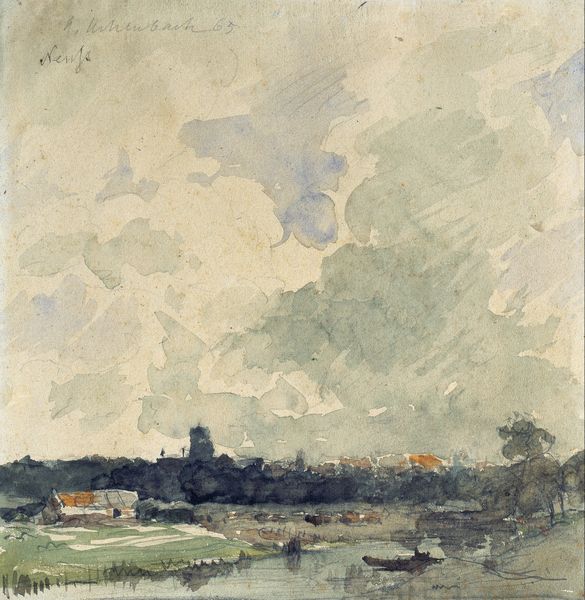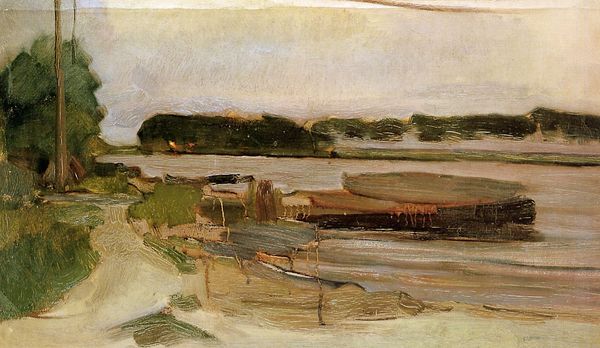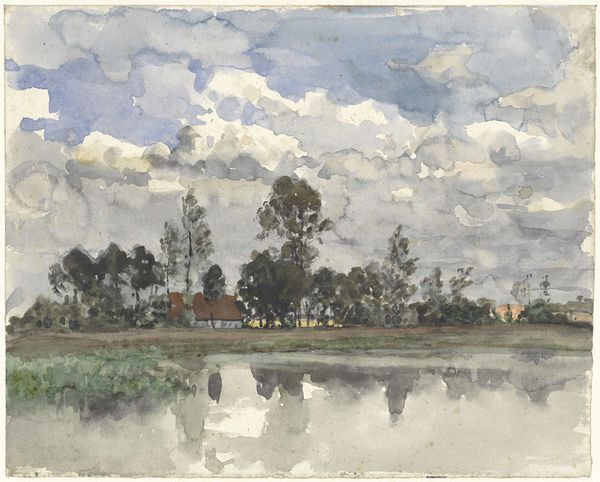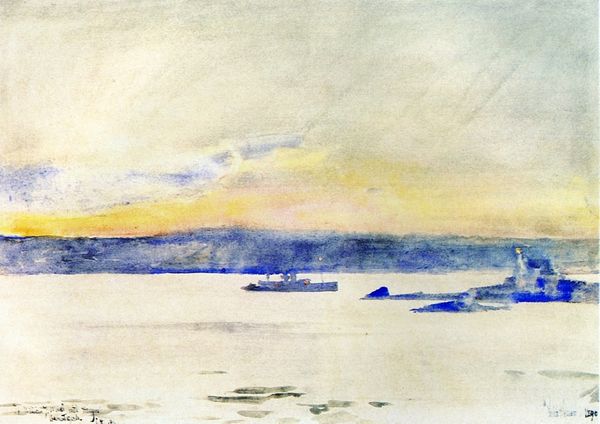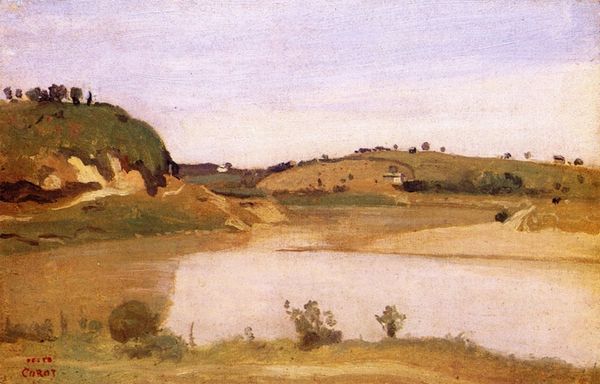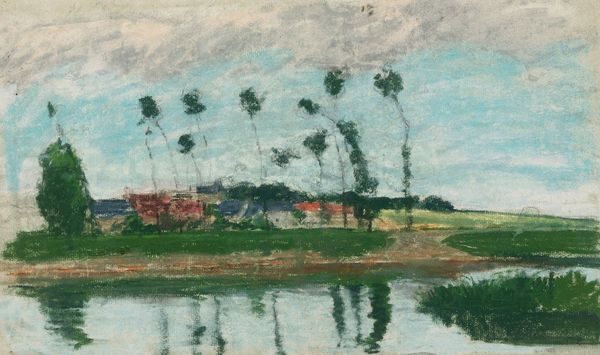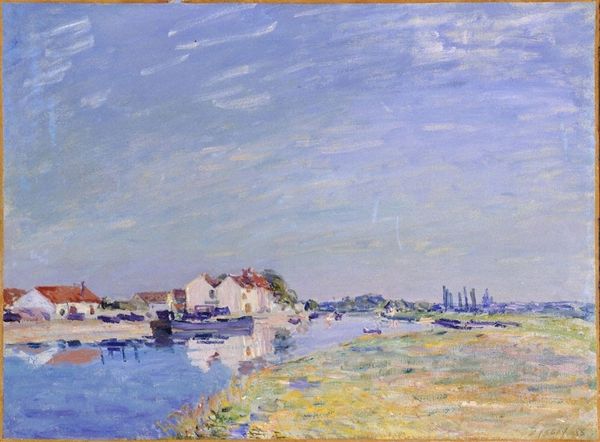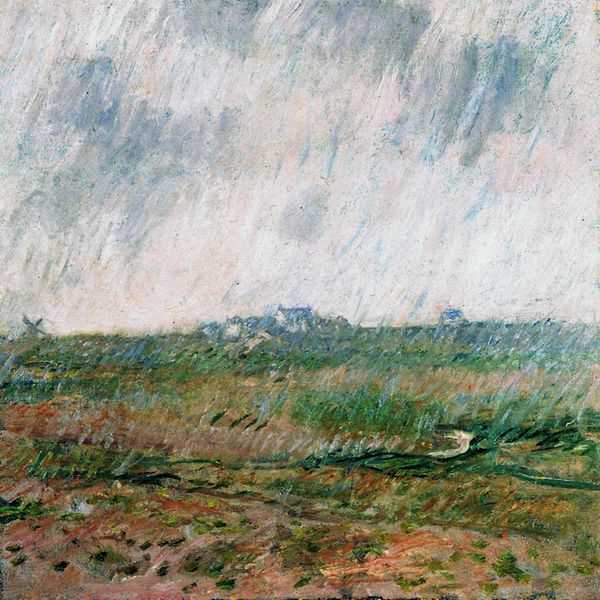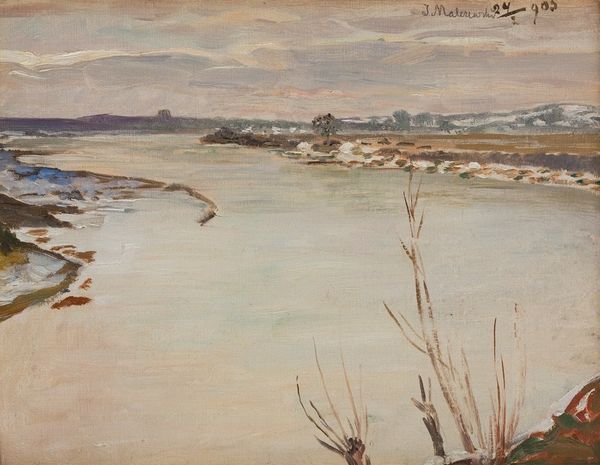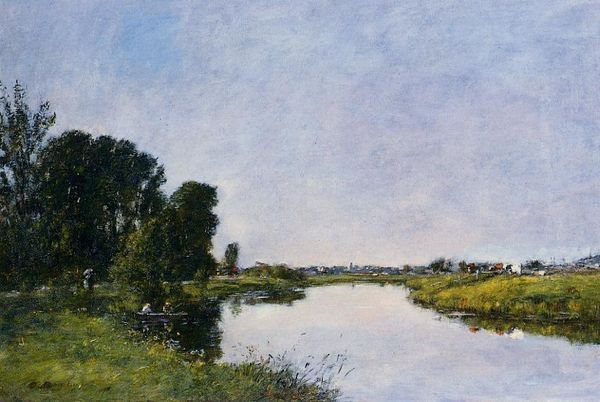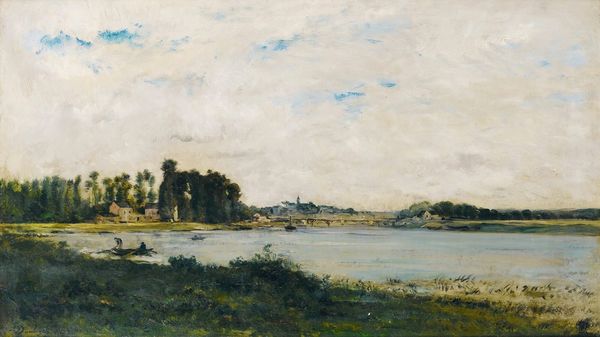
plein-air, watercolor
#
water colours
#
impressionism
#
plein-air
#
landscape
#
watercolor
#
cityscape
#
realism
Copyright: Public domain
Curator: Up next, we have "Chatou near Bougival," a watercolor painted in 1889 by Childe Hassam. Editor: Instantly calming. That band of pale blue separating land and sky is masterful, like a sigh made visible. There’s something ephemeral about it. Curator: It certainly captures a fleeting moment. Hassam was working in the plein-air tradition at the time, deeply influenced by Impressionism and the Realist movements. This is a moment in time, rendered immediately. Editor: The application of watercolor enhances that feeling too, right? It’s not trying to build some grand statement. It feels...intimate. The loose brushstrokes give the landscape a gentle blur, like a half-remembered dream. Almost photographic. Curator: That speaks to the artistic currents swirling at the time. The rise of photography presented a new way of seeing, influencing painters to explore subjective experiences of light, shadow, and atmosphere. Consider also that Impressionism’s radical approach was slowly solidifying within art institutions. The landscapes became a more acceptable, commodifiable genre. Editor: Did Hassam focus on watercolors often? There's such freedom and directness here; it suits the Impressionist sensibility perfectly. I think I get a better sense of his personality with this compared to something on a larger scale like oil on canvas. It makes the ordinary almost transcendental. Curator: Though better known for his oils, these smaller pieces gave him space to investigate. He uses the inherent qualities of watercolor—its transparency and fluidity—to capture the essence of light on water, the hazy distance, a momentary pause. Editor: There's this one bird barely perceptible, so delicate... like it's stitched onto the paper, alone yet part of the scene. What is it doing, flitting along without any other sign of people about? Curator: Maybe just enjoying the view. You know, these quiet scenes tell a lot about how artists in that period saw both a need for progress and also for the tranquility of rural settings and how these fit together to make up an entire society. Editor: It really captures that feeling of fleeting peace, doesn’t it? Like Hassam gifted us a moment he snatched for himself and said, “Look! There’s beauty here too.” Curator: Precisely. Hassam seemed to know how to extract such sublime moments from everyday scenes.
Comments
No comments
Be the first to comment and join the conversation on the ultimate creative platform.
